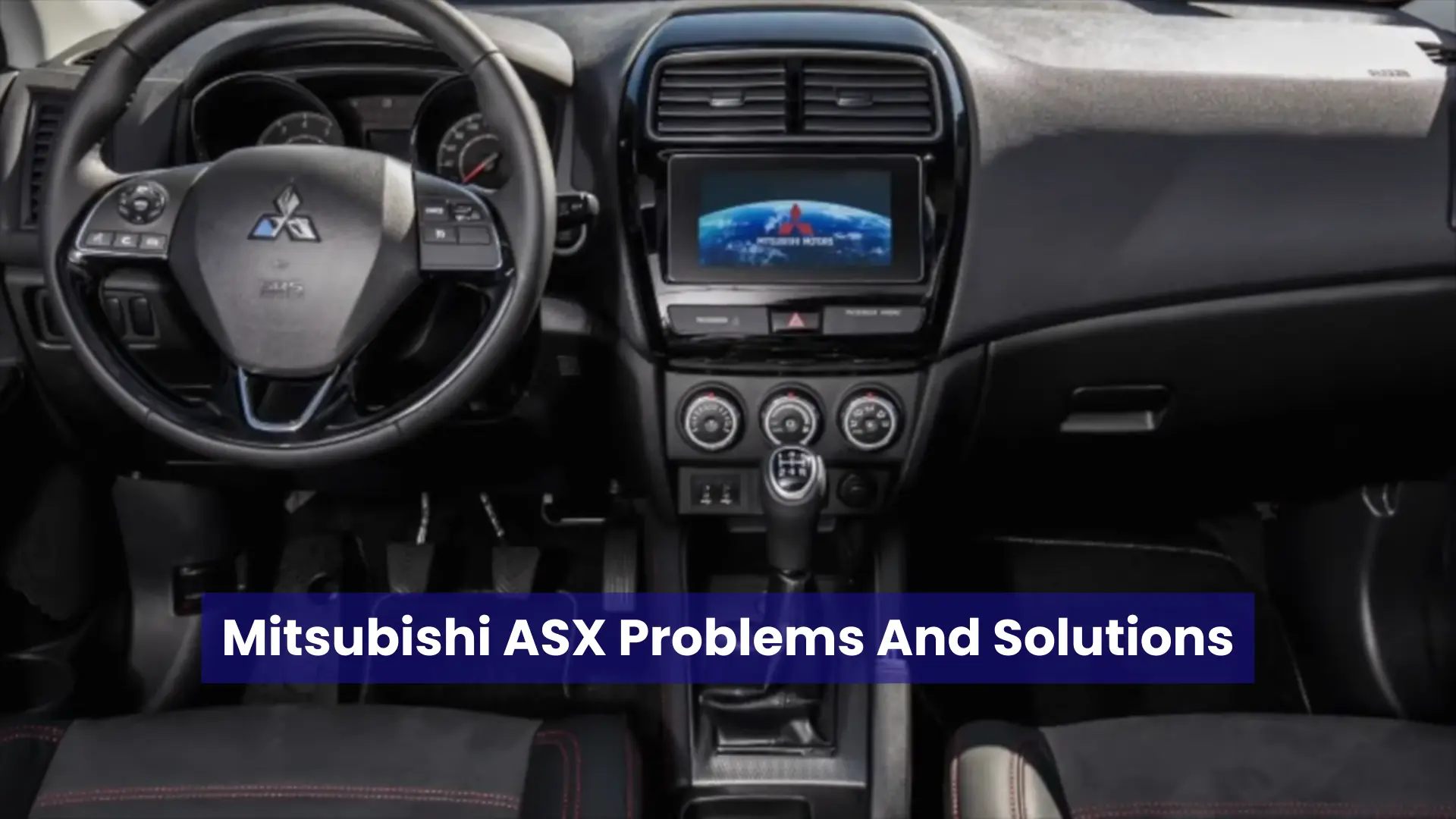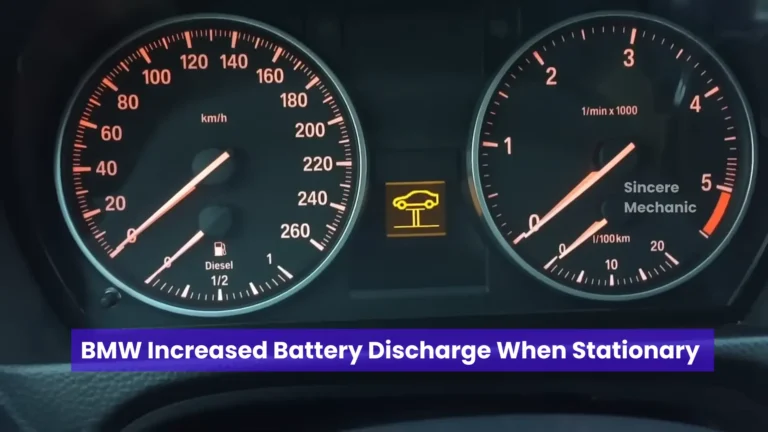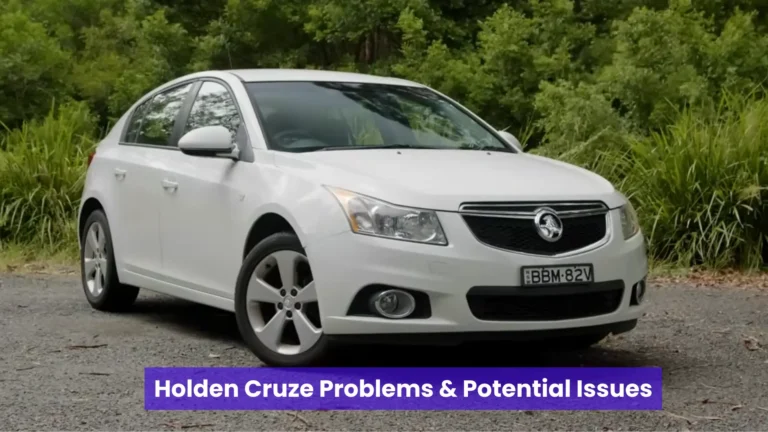Mitsubishi ASX Problems And Solutions [Detailed Guide 2025]

You should be aware of Mitsubishi ASX problems, whether you plan to buy a used car or own an ASX. Awareness and addressing knowledge of common critical issues can help minimize the damage. Mitsubishi ASX is famous for its blended features and has gained popularity for its affordability, safety, and stylish features.
In this article, I will explain the potential problems in detail, delve into their causes and solutions, which Mitsubishi ASX years you should avoid, and how to inspect a used Mitsubishi ASX before buying it. So, let’s explore the problems comprehensively.
Mitsubishi ASX Problems
Based on the Mitsubishi ASX owner’s reviews, I’m explaining common issues faced multiple times by the ASX owners. However, the probability of critical problems in new Mitsubishi models is very low because car performance is optimal and reliable at that time. After covering a distance of 155,000 to 186,000 miles, the car components start showing faults, errors, and malfunctions.
Just like keeping your car in top shape is essential, having access to uninterrupted music is also important—this is where Spotify Premium APK comes in, allowing you to enjoy ad-free music while on the road.
Engine Performance Problems
The most reported complaint by the ASX owners is about bad engine performance, mainly caused by unusual noises, overheating, bad air filters, cooling system issues, and a bad catalytic converter. Over time, the engine’s components need timely replacement or repair. Some components become faulty and affect overall engine health. Some of the most encountered engine-related problems are explained below:
- Damaged oxygen sensors: Oxygen sensors are crucial in maintaining engine performance, as they help the ECU adjust the air-fuel mixture. When they become faulty, they can disrupt the engine control unit’s function and lead to engine problems.
- Excessive oil consumption: Many ASX owners experience a sudden increase in fuel consumption. There are several reasons for excessive oil consumption, such as oil leaks, a bad fuel pump, poor fuel quality, a faulty throttle body, and a clogged fuel injector.
- Engine stalling: Another frustrating engine problem is stalling while starting the Mitsubishi ASX. Stalling is a critical problem that can occur after long usage due to a lack of lubrication and electrical issues.
Solutions
Any Mitsubishi ASX owner who stays focused on regular maintenance and promptly repairs the damages will encounter fewer engine-related issues. After sudden fuel consumption, inspect the piston rings and valve seals, if necessary, to replace or repair them and ensure that the service is promptly fulfilled. It is always advised to get regular services from a certified mechanic with deep, advanced knowledge of the engine and its components.
Transmission Issues In Mitsubishi ASX Problems
Asx owners often report complaints about various transmission issues like acceleration problems, gear slippage, clunking sounds, delayed drive, and sudden loss of power. When the transmission system starts showing faults, it can cause severe engine damage and complex, costly repairs. Here’s a look at common complaints
- Shuddering and jerking: When drivers start the engine by turning the ignition switch on, the continuously variable transmission (CVT) starts shuddering and shaking due to worn belts or pulleys. Continuous shuddering can affect the internal components of the transmission.
- Overheating: Some ASX models experience consistent increases in temperature, which can cause transmission system overheating. In this condition, the limp mode will be activated automatically, which means the vehicle reduces the power, which can affect the entire engine’s performance.
- Gear slippage: Mitsubishi ASX owners encounter gear slippage mainly caused by a faulty clutch. It’s a critical, serious safety issue that can cause delayed engagement while shifting the car from parking to driving or reversing.
Solutions
Transmission issues are one of the worst Mitsubishi ASX issues, and they are very complex to resolve and require advanced mechanical skills for repair or replacement parts. Manual and error code scanner inspection from an expert mechanic, control module and clutch correctly functioning, updated software to the latest version, and using fresh fluid oils are the keys to keeping the transmission system in tip-top condition.
Electric And Electronic Issues
Other problems in Mitsubishi ASX are electric and electronic issues found in several electric parts. These issues include:
- Battery draining: An unexpected battery draining is usually caused by a faulty alternator. The battery is the most vital electric part that supplies current to other electronic components, and the alternator is responsible for charging it.
- Infotainment system glitches: Mitsubishi ASX owners usually complain about glitches in the infotainment system. They report that sometimes the touchscreen becomes unresponsive, and no action can be performed on it for a short period.
Solutions
If the battery drains rapidly and the infotainment system does not function properly, it’s time to consult a mechanic with expertise in resolving electrical faults. He will deeply check the battery condition, ensure the terminals are corrosion-free, and diagnose other electric components. To avoid further issues, replace a faulty component that can’t be used anymore.
Steering Problems
Some Mitsubishi ASX owners report issues with steering, such as faulty steering boxes, worn hoses, grinding or screeching noise when steering, and loose hose couplings. An accurately working steering system is mandatory for a reliable and safe journey. Some steering system-related issues are explained here:
- Hard steering: It’s a critical problem usually caused when the fluid in the power steering system is low, or the internal component is damaged or faulty.
- Alignment problems: When the wheels aren’t properly aligned, the steering wheel vibrates, making it hard to control steering.
Solutions
Firstly, consult a mechanic and get services for steering issues. Ensure the wheels are properly aligned and the Mitsubishi is not vibrating. To fix the hard steering problem, check the fluid and fill it to the mandatory level. The fresh fluid keeps the steering lubricated and smooths its rotation.
Air Conditioning Problems
A properly functioning air conditioner helps you drive comfortably, especially in hot weather. A significant problem in some ASX models is that the air conditioner delivers insufficient cooling. In hot weather, it becomes very difficult to drive for a long time without sufficient cooling that maintains the vehicle’s interior temperature.
Here are a few causes that can reduce AC performance.
- Compressor issues: When the compressor becomes faulty, it can disrupt the functioning of the AC. Odd noises, lukewarm air, ECU errors, and oil leaks are the common symptoms that ensure the compressor is malfunctioning and needs repairing.
- Refrigerant leaks: Sometimes, the refrigerant levels become low due to leakage or not changing for a long time, which reduces cooling performance.
Solutions
Inspect the compressor and check for refrigerant leaks. If anything is worn or showing signs of wear and tear, it’s recommended to change it and install a new one.
Mitsubishi ASX Years To Avoid
Some Mitsubishi ASX models are identified as having problems greater than others because most complaints are reported by the owners using these models. Here’s the breakdown of Mitsubishi ASX years that you can avoid while buying:
| Model Year | Common Issues |
|---|---|
| 2011 | Transmission problems, excessive oil consumption, electrical issues |
| 2012 | Continuation of transmission problems, engine stalling, issues with the CVT |
| 2013 | Engine misfires, CVT transmission failures, premature brake wear |
| 2014 | Electrical system malfunctions, CVT issues, excessive oil consumption |
| 2015 | Suspension problems, transmission issues, paint and interior wear |
| 2016 | Air conditioning problems, infotainment system issues, premature wear on various components |
Final Words
The Mitsubishi ASX is a generally reliable SUV with many appealing features and advanced technologies. Like other vehicles, owners also experience the ASX Mitsubishi problems while taking advantage of its features. After understanding the Mitsubishi ASX errors like electrical faults, steering issues, engine performance problems, transmission issues, and air conditioner problems, you can make informed decisions about buying a used Mitsubishi ASX or owning it already.
Every ASX owner needs to be aware of common issues because this knowledge can help you when you suddenly face any technical problem. So, keep yourself informed and proactive about regularly following the services, resulting in smooth vehicle performance.
FAQ – Frequently Asked Questions
What are the common Mitsubishi ASX problems?
Potential Mitsubishi ASX problems include transmission issues (shuddering, jerking, and delayed engagement), battery draining due to faulty alternators, excessive oil consumption, electrical issues (faulty wiring, blown fuses, loose connection), and air conditioning problems.
Why is my Mitsubishi ASX consuming too much oil?
Several things can contribute to too much oil consumption, but worn piston rings and leaking valve seals often cause it. You can check these two components and replace them if necessary to prevent ASX cars from excessive oil consumption.
How can I fix the battery drain problem in my Mitsubishi ASX?
First, inspect the alternator to fix the battery drain problem and ensure it’s working correctly. The battery draining issue often occurs when the alternator is faulty. Additionally, test the overall battery performance by testing its voltages.
Martin Lee is an ASE-certified mechanic and contributing author at SincereMechanic. He uses his expertise to create captivating articles that align with our content strategy. Using his deep automobile knowledge, he does in-depth research, puts expertise into articles, and makes them very informative. That information ensures our readers receive many valuable insights about the Vehicles.

![Depollution System Faulty Peugeot 307 Issue [Reset/ Fixed] 1 Depollution System Faulty Peugeot 307](https://sinceremechanic.com/wp-content/uploads/2024/05/Depollution-System-Faulty-Peugeot-307-768x432.webp)




